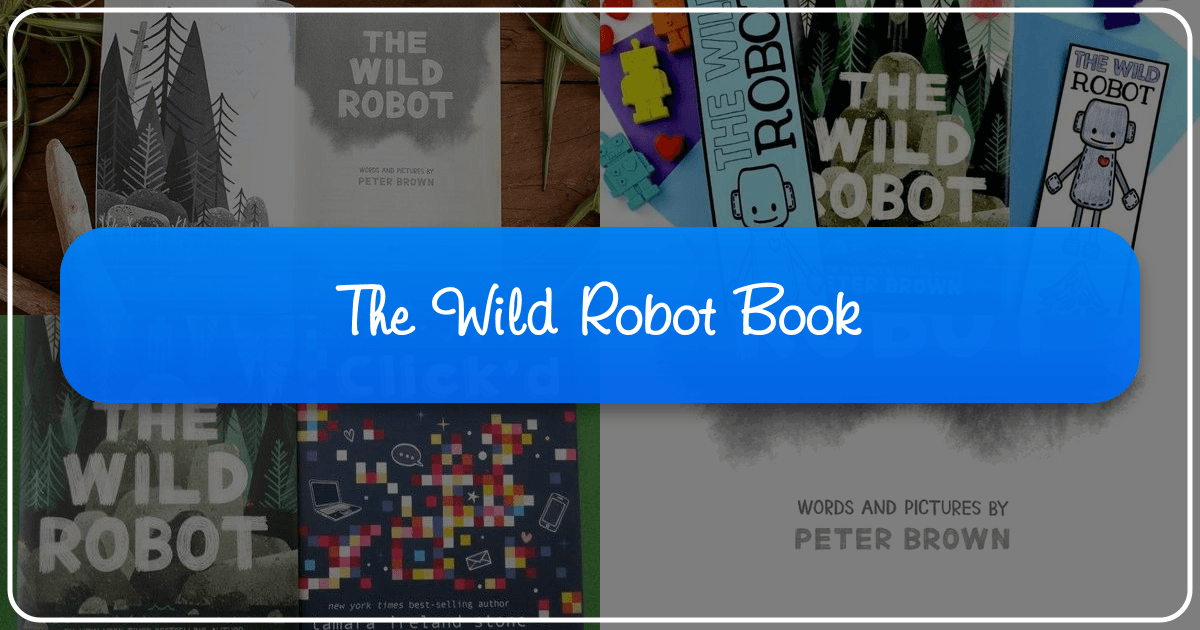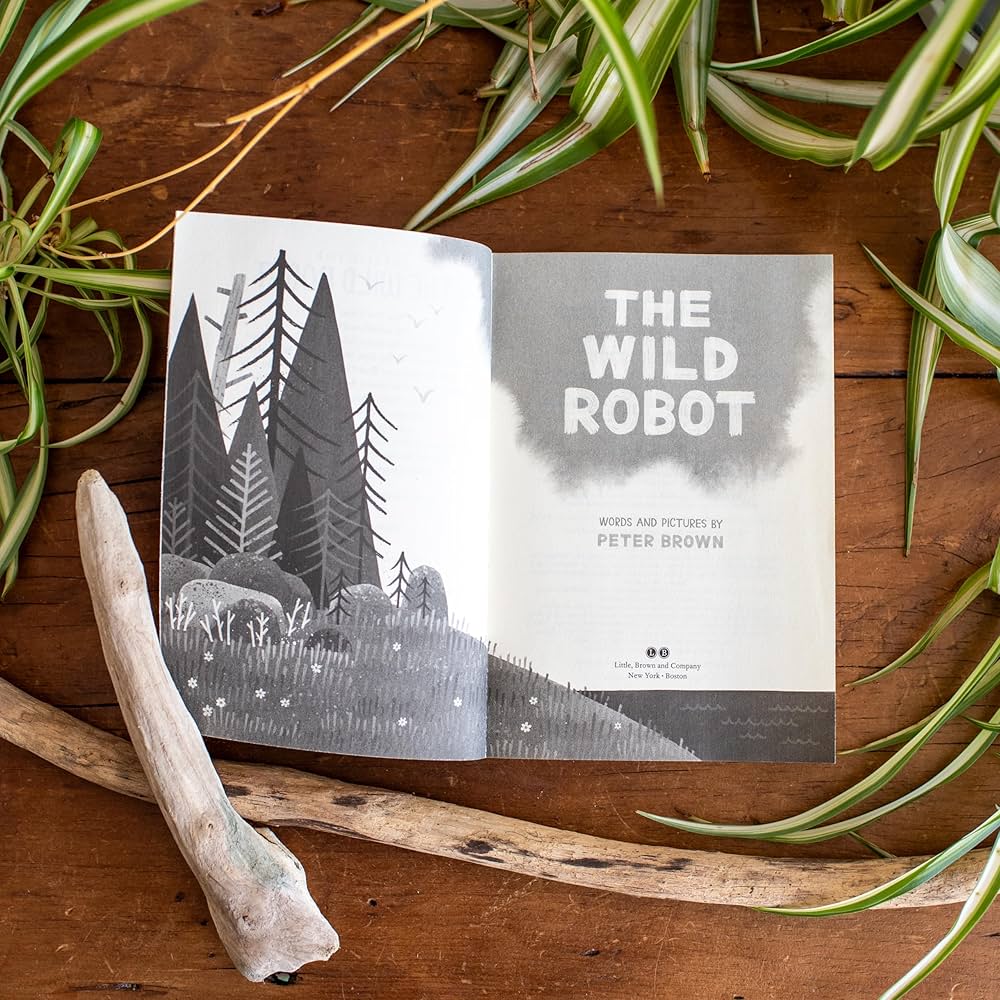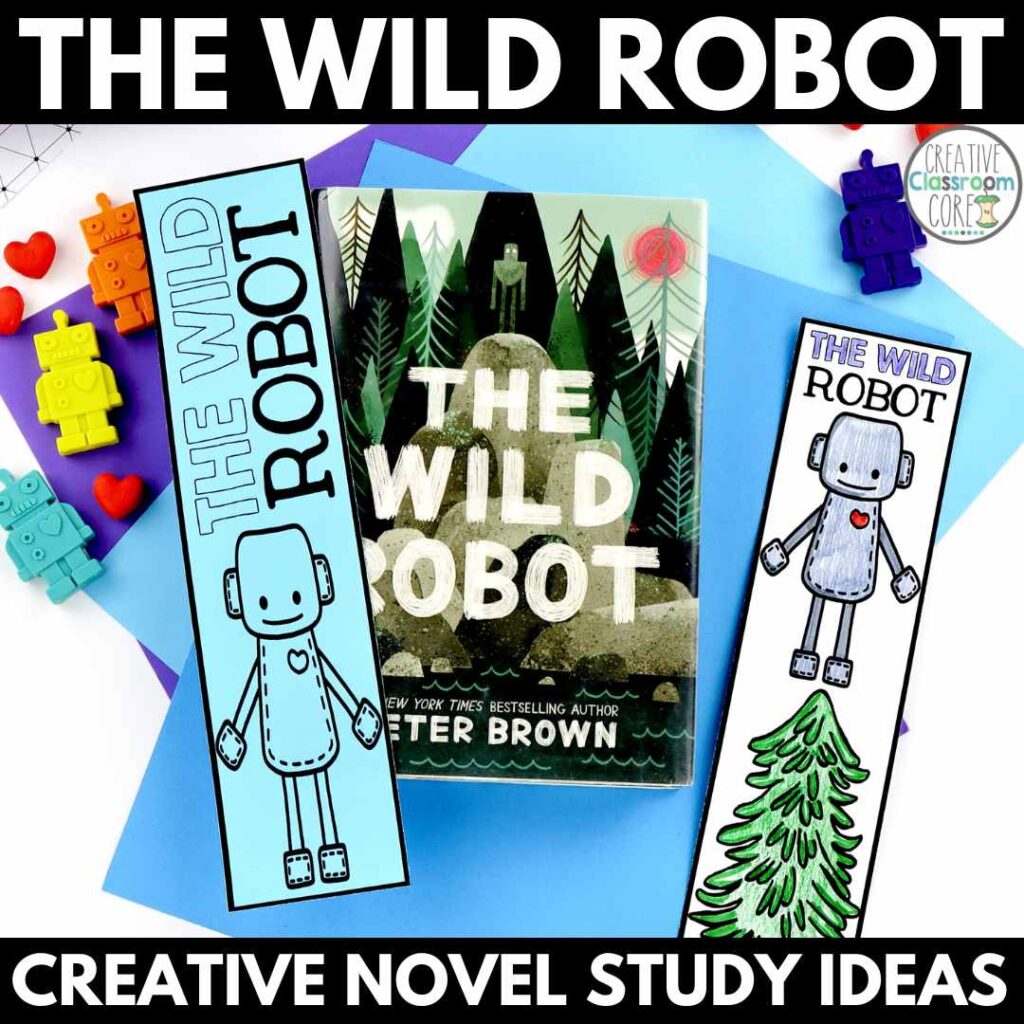*The Wild Robot*: A Deep Dive into a Literary and Cultural Phenomenon

Peter Brown’s The Wild Robot is more than just a children’s book; it’s a captivating story that has resonated with readers of all ages, sparking discussions about nature, technology, and the complexities of survival. This in-depth exploration delves into the various aspects of The Wild Robot, examining its genre, literary influences, cultural impact, and the author’s background, drawing upon information from multiple sources, including Amazon, Hachette Book Group, and Yotoplays.
1. Genre and Literary Landscape:
The Wild Robot falls primarily within the genres of children’s literature, juvenile fiction, and science fiction. However, its appeal transcends these simple categorizations. The novel seamlessly blends elements of adventure, survival, and environmental storytelling, creating a unique narrative experience. While categorized as science fiction due to its central character, a robot, the story’s focus isn’t on futuristic technology or space exploration. Instead, it centers on Roz, the robot protagonist’s journey of self-discovery and adaptation within a natural environment. This focus on the natural world and Roz’s interactions with animals positions the book within the realm of animal fiction and environmental literature.

The story’s structure also contributes to its unique nature. The episodic chapters, focusing on Roz’s encounters with various animals, invite repeated readings and allow younger readers to follow Roz’s progression easily. The overarching narrative, however, maintains a compelling arc for older readers, exploring themes that are often ignored in children’s literature. The integration of science, emotional depth, and detailed descriptions of the natural world elevates The Wild Robot beyond its genre classification, offering a reading experience that is both intellectually stimulating and emotionally engaging.

Classic and Contemporary Influences:
While it is a contemporary novel, The Wild Robot incorporates elements reminiscent of classic literature. The island setting evokes images of Robinson Crusoe-esque narratives about survival and isolation, prompting reflection on humanity’s relationship with nature. Roz’s journey mirrors the classic “bildungsroman,” a coming-of-age story, but with a unique technological twist. Her interactions with the animals resonate with animal fables, conveying moral lessons and exploring themes of friendship and community. The novel also subtly touches upon elements reminiscent of dystopian literature, as Roz is a product of human ingenuity and faces the unknown consequences of technological advancements. These varied influences create a rich tapestry that adds complexity and depth to the seemingly simple narrative.
2. Author and Inspirations:

Peter Brown, the author and illustrator of The Wild Robot, is a Caldecott Honor recipient and acclaimed children’s book creator. His background in illustration and animation is evident in the novel’s richly detailed imagery. The descriptions of the island’s flora and fauna, combined with the robot’s design, are brought to life through vivid language and imaginative illustrations. The success of The Wild Robot isn’t merely a result of storytelling skill; it’s a testament to Brown’s ability to seamlessly integrate art and text, creating an immersive reading experience.
Brown’s inspirations for The Wild Robot are likely drawn from several sources. His own love of nature and wildlife is evident in the detailed depictions of the island’s ecosystem, influencing the realistic portrayal of the animals. The concept of a robot protagonist probably stemmed from a fascination with artificial intelligence and its potential impact on the environment. The incorporation of technological elements within a natural setting suggests an interest in the interplay between human innovation and the natural world. His own journey as a creative artist likely served as another source of inspiration, influencing the novel’s exploration of self-discovery and the process of adapting to unfamiliar environments.
Writing Style and Techniques:
Brown’s writing style is characterized by its clarity, simplicity, and emotional depth. While the book is aimed at middle-grade readers, the language is accessible to a broad audience, devoid of unnecessary complexity. Yet, the narrative avoids sentimentality, presenting both joyful and tragic moments with an authentic voice. The author’s ability to create complex emotions using straightforward language is a key element of his success.
The use of third-person narration allows readers to empathize with Roz, understanding her struggles and triumphs without the limitations of a first-person perspective. The carefully crafted pacing of the narrative sustains suspense and curiosity throughout the book, while the episodic chapters provide structure and accessibility for younger readers. The blend of narrative and descriptive language creates a vivid world that readers can easily imagine, further enhancing the emotional impact of the story.
3. Reading Experience and Educational Value:
The reading experience provided by The Wild Robot is multifaceted, offering different levels of enjoyment and understanding for various age groups. Younger readers appreciate the clear narrative, simple language, and engaging illustrations. They are easily drawn into the adventure, cheering for Roz’s survival and her unlikely friendships. Older readers find deeper meaning in the themes explored throughout the novel, pondering the ethical questions surrounding artificial intelligence and its interactions with the natural world. The book’s blend of action and quiet reflection makes it enjoyable for both fast-paced and thoughtful readers.
The Wild Robot possesses significant educational value. It introduces readers to diverse wildlife found in various ecosystems, stimulating interest in environmental studies. The novel subtly introduces themes of environmentalism, highlighting the importance of respecting the natural world and acknowledging humanity’s influence upon it. Furthermore, the book serves as a powerful illustration of adaptation, resilience, and the formation of unexpected bonds. These themes, presented in an engaging and non-preachy manner, resonate deeply with young readers, nurturing important life lessons about empathy, understanding, and respecting different life forms.
Life Lessons and Reading Habits:
The book offers valuable life lessons without explicitly stating them, allowing readers to draw their own conclusions. Roz’s struggle to survive teaches resilience and adaptability. Her friendships with animals highlight the importance of empathy and understanding diverse perspectives. The novel’s open-ended nature promotes critical thinking and encourages readers to question their own assumptions about nature, technology, and the concept of “home.”
The Wild Robot can positively influence reading habits. The captivating narrative and engaging illustrations make it an ideal choice for young reluctant readers, introducing them to the joy of longer-form storytelling. The story’s accessible language reduces potential frustration and fosters a sense of accomplishment, encouraging young readers to embrace longer books. The episodic chapters allow for pausing at natural breaks, fostering a more positive reading experience and contributing to the development of positive reading habits.
4. Cultural Impact and Reception:
The Wild Robot has achieved significant cultural success, translating into multiple languages and earning numerous accolades. Its popularity is evidenced by its status as a #1 New York Times bestseller and a major motion picture adaptation by DreamWorks Animation. The book’s exploration of ecological themes has resonated with environmentally conscious audiences. The story’s simple yet profound themes of friendship and acceptance have broadened its reach, attracting a diverse fanbase. The unique blend of science fiction and animal fiction has proven to be a successful combination, establishing a unique place within contemporary children’s literature.
The critical reception of The Wild Robot has been overwhelmingly positive. Critics have praised Brown’s evocative writing style, detailed illustrations, and exploration of nuanced themes. The book’s ability to engage young readers while simultaneously stimulating critical thinking has earned it significant critical acclaim. The positive feedback from both readers and critics has helped solidify the book’s place as a significant contribution to children’s literature.
Adaptations and Awards:
The DreamWorks Animation adaptation of The Wild Robot further broadened the book’s reach and cemented its status as a popular cultural phenomenon. The movie adaptation allowed the story to engage new audiences through a different medium, reaching beyond the traditional readership of the novel. The success of the film adaptation showcases the universality of the story’s themes and its potential to appeal to a wide range of viewers.
The book has garnered several awards and recognitions, reflecting its literary merit and impact. The accolades reinforce its quality and place it among significant works in children’s literature, further contributing to its cultural influence. The recognition of the book through awards and adaptations proves its staying power and its ability to capture the imagination of multiple generations.
5. Community and Online Presence:
The popularity of The Wild Robot has fostered a vibrant online community, with many readers sharing their experiences and interpretations of the story. Social media platforms, online book forums, and review sites host many discussions about the book, further solidifying its cultural impact. This online engagement demonstrates the lasting interest in the story and allows readers to connect, share opinions, and build a sense of shared experience. The active online community surrounding the book extends its reach beyond the physical book itself, highlighting its impact on reader engagement.
The online presence of The Wild Robot and its author, Peter Brown, further emphasizes the book’s cultural influence. Websites like Amazon, Hachette Book Group, and various book review sites highlight the book, providing access to readers and promoting discussion. The book’s availability on multiple platforms, including e-readers and audiobook formats, expands its reach and caters to diverse reading preferences, contributing to its broad acceptance and lasting impact. The combined success across various platforms solidifies its status as a major literary and cultural touchstone.